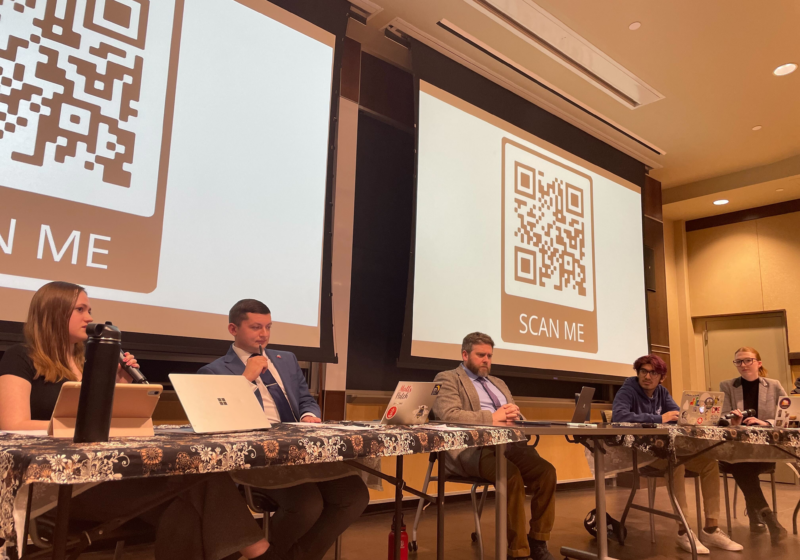At an institution where undergraduates and their families pay over $50,000 annually for an education, students on the River Campus have raised concerns about the value of UR: What is a $50,000 education worth today? When my kids go to college what kind of money will I be paying for their education? Why isn’t UR spending more of its endowment?
Dean of the College Faculty Peter Lennie and Chief Financial Officer Ronald Paprocki sought to tackle these concerns in an interview with the Campus Times. In the first of a two-part series, Paprocki and Lennie discussed the value of a private school tuition compared to student’s other options.
For $50,000 a year, what does a student get out of that?
Peter Lennie: Our aim is to prepare students for distinguished service to society and to be leaders. We are in a rarefied business. We are preparing a select group of people for a special place in society where they can achieve more than other people and are prepared for service. That’s an investment that I think the analyses show is well worthwhile.
Ron Paprocki: I think that’s the way to look at it as an investment. It’s not a consumption expense, where for four years of your life you pay this much. It’s something that you take for the rest of your life. It’s a capital expense that pays dividends over your lifetime.
PL: There are very substantial analyses of the benefits of a powerful education in a university. The economic benefits are very clear. The lifetime earnings potential of graduates is vastly higher than those who haven’t been to college. … Our aim is to make sure that people are confident that the investment is worthwhile.
Are there any specific numbers about median salaries after students graduate from UR?
PL: Business schools do that routinely but we don’t have access to that for undergraduates.
There are overall statistics of the lifetime benefits of a university education that are public, and The Economist recently had an analysis of that and they were very powerful. But we would need to know much more about the life of individuals to be able to do that for us.
RP: Some of our students go off to employment, some of them go off to graduate school or Ph.D. programs or M.D.s. Business schools analyze the starting schools of their graduates the year after graduation and that kind of the thing would not really be relevant.
In terms of rising education costs, obviously need-based financial aid has gone up and federal government aid has covered an increasing portion of the lower class.
Do you have any fear that people in the middle class may end up waking up one day and say, “Hey I don’t know if I can afford this, it might not be worth it?’
PL: It’s a proper question to ask. We’re very concerned about the affordability, and it’s clear that people who qualify for a very substantial amount of aid may very well have a very easier time than people who qualify for less. We are concerned about that and we try to mitigate the difficulties. But yes, it is a legitimate concern.
We address it by some degree by putting increased amounts of money into aid. The amount of aid that we provided this year and last year will be a great deal higher than we originally projected, just because of the economic circumstances.
In 20 years, do you see the future of tuition at a private university such as this at $70,000 a year? And if so, will that be a concern?
RP: It’s a concern now. We’re always concerned about affordability and that’s one of the reasons extra dollars are put into the need-based aid programs so that people with financial difficulties can afford to come here.
I don’t know where this is going. To the extent that our costs increase, prices will increase. We’re trying to keep the cost increases as low as possible. We’re always looking for efficiencies and we’re focusing resources on academic programs and the student services that need to go with it. But it’s a challenge to keep prices low. I see the need for increases in the future.
PL: I think one of the things that is important to bear in mind is that we’re a labor-intensive business it’s a very high-skilled labor that we employ.
It’s really unlike most other institutions where there are manufacturing efficiencies that are available.
The opportunities for us to take advantage of new technologies in manufacturing, for example, are not there. It’s also important to bear in mind that part of the increase in costs reflects the provision of additional services.
If you look at what’s available to students now versus 10 or 15 years ago there is an awful lot more. It’s inherently expensive, higher education, and that’s one of the facts that we have to deal with.
Willis is a member of the class of 2011.
Additional reporting by Willie Clark.
Check back in next week’s issue for part two of this interview.




